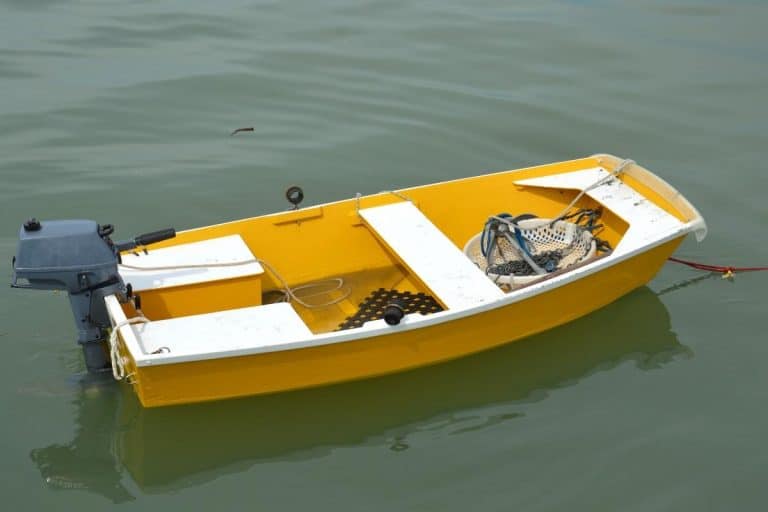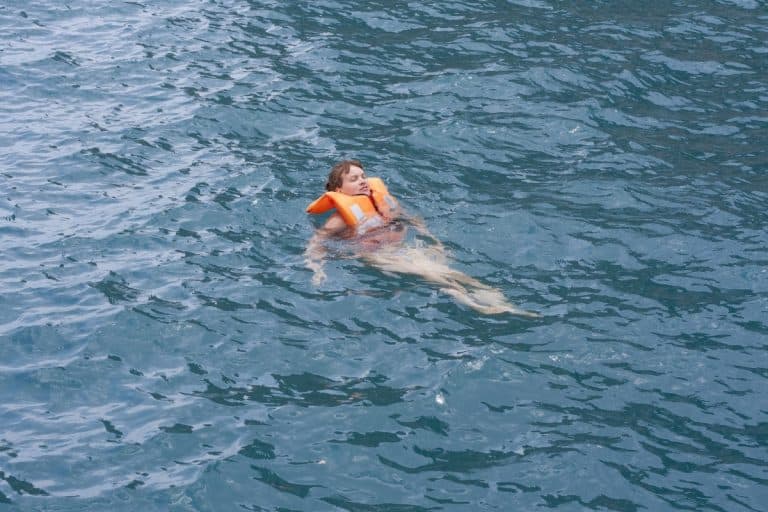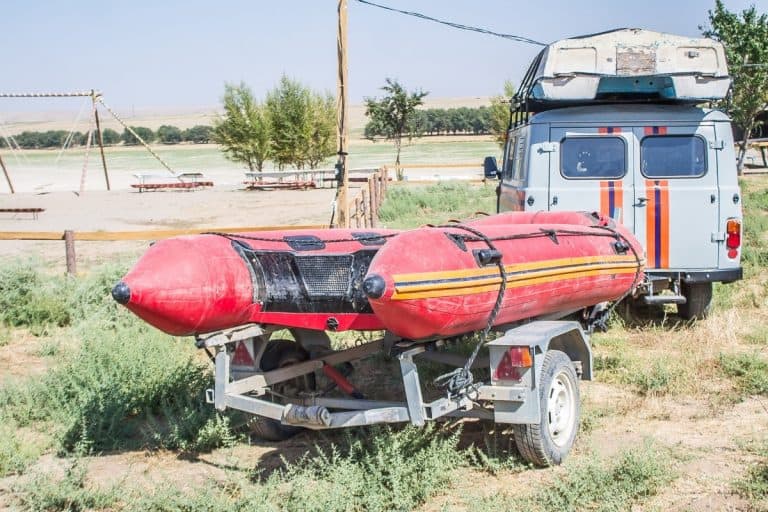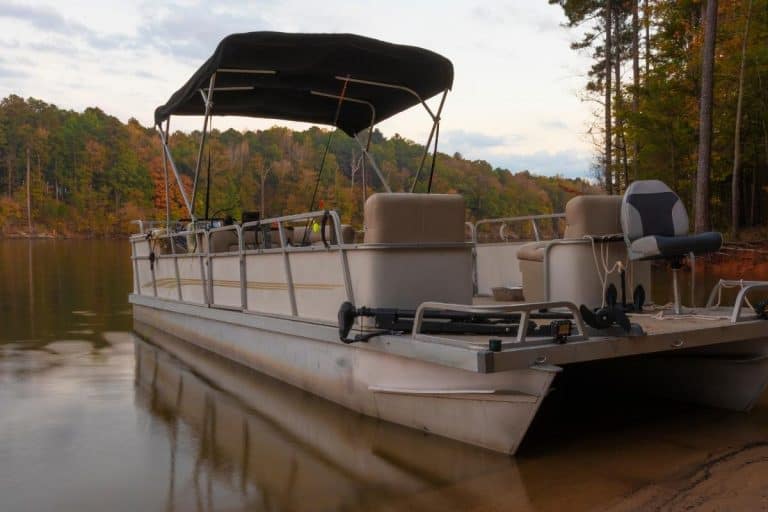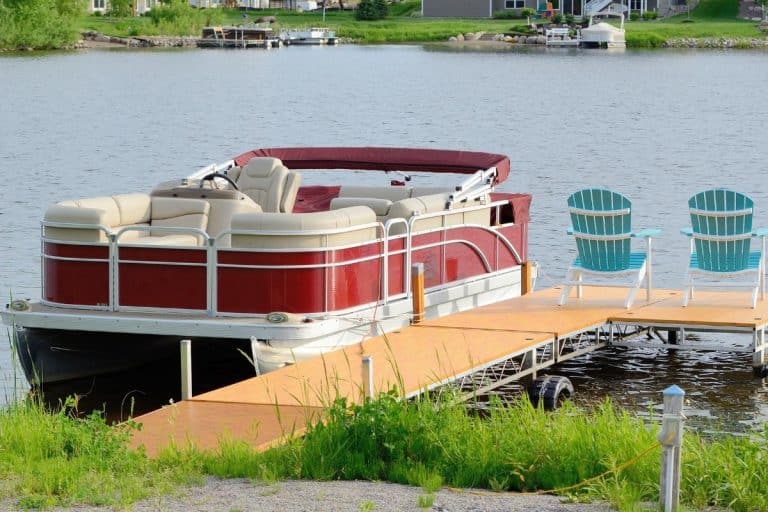How Fast Does a Boat Need to Go to Pull a Skier? Speeds Listed for Various Boat Types
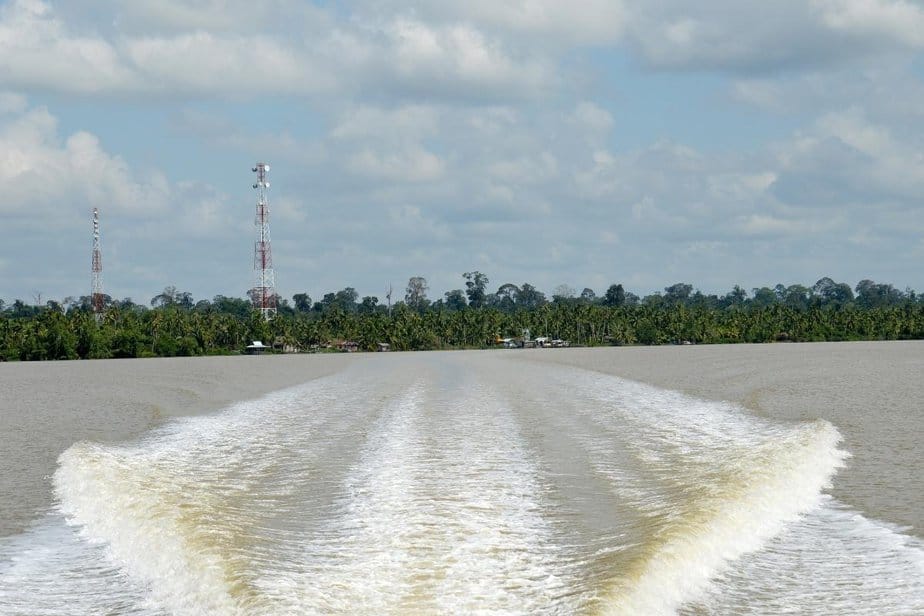
When entertaining guests on your boat by pulling them on skis, you know your boat needs to achieve a certain speed. Ahead, I’ll tell you exactly what that speed is.
How fast does a boat need to go to pull a skier? For waterskiing and wakeboarding, your boat should reach speeds of 20 miles per hour at a minimum but ideally 30 miles per hour and up. That makes everything from pontoon boats to speedboats eligible for towing skiers.
Ahead, I’ll explore in more detail the recommended amount of speed and horsepower a boat should possess when pulling a water skier. I’ll also provide safety tips so that all parties can have an exciting time on the water!
The Boat Speed Needed to Pull a Skier
Pulling friends and family who are engaging in aquatic activities is one of the biggest upsides of boat ownership.
What kind of speed does your boat need to be capable of to make this activity its most enjoyable?
At the very least, your boat should be capable of towing a skier at 20 MPH.
Keep in mind that it won’t be the most high-octane experience for the water skier at that speed.
It can sort of feel like you and they are lumbering along, which lacks the excitement and thrill they’re used to.
If your boat can reach speeds of around 26 or 27 MPH, that’s better. The ride is more commensurate with what a water skier would expect when being towed by any other vessel.
Those boats that can easily tow at a speed of 30 MPH and up are the best candidates for pulling skiers, as the recommended speed when water skiing is at least 30 MPH.
As a reminder, here is the average speed of various boat types so you can see how viable yours is for this activity:
- Game boats – 14 MPH
- Runabout boats – 28 MPH
- Center console boats – 55 MPH
- Yachts – 28 MPH
- Houseboats – 15 MPH
- Pontoon boats – 30.7 MPH
- Cuddy cabin boats – 20 MPH
- Sailboats – 8 MPH
- Dinghies – 7 MPH
- Deck boats – 34 MPH
- Fishing boats – 50 MPH
How Much Horsepower Does a Boat Need to Pull a Skier?
In addition to speed, a boat that’s going to pull a water skier also needs horsepower.
Allow me to take a moment to explain the difference between speed and horsepower.
Speed is your variable operating pace whereas horsepower is the amount of power that your boat engine produces while you’re achieving that speed.
Keeping that in mind, how much horsepower is required to tow a water skier?
At the very least, your boat must be capable of achieving 25 to 40 horsepower. Ideally, you want more than that.
Like a lower max boat speed impedes the excitement of the water skiing experience for the rider, the same is true of having low horsepower.
There just won’t be very much oomph behind what you’re doing. There will be no room for tricks and no skill development for the water skier. It’s all straightforward and a touch boring.
A young kid might still find the experience fun, but a teen or adult would say the whole thing was a little (or a lot) lackluster.
If you want to tow children on your boat, then the vessel should be rated for 60 to 65 HP.
For adults, a boat that’s 70 HP is better, as you can pull at least one rider who’s 175 pounds at a reasonable speed.
Should your boat be well-rated in the horsepower department and has 90 HP or more, then you can tow any water skier, be that a child or adult.
Your boat may even be capable of pulling more than one rider.
At the very least, if a water skier is of an average weight, you can pull them quickly on a 90-HP engine so they can perform all the stunts and tricks their heart desires.
What If My Boat Is Too Slow to Pull a Skier? Then What?
You looked into your boat specs, and disappointingly, the vessel doesn’t have as much speed or horsepower as you were hoping for.
Your kids or nephews have been begging you to take them water skiing on your boat, or maybe it’s even an adult friend or two.
You don’t want to disappoint anyone, but what are your options for gaining speed? Let’s go over them now.
Use a Booster Ball
If you’re really disheartened about your boat’s lack of speed, then invest in a booster ball.
Although I’ve recommended it on the blog before, I will once again point you in the direction of the Sportsstuff booster ball.
So how does it work? You tow the booster ball from the back of your boat via a tow rope.
As you pull your boat along, the booster ball is lifted from the water. The rate of rope spray is reduced, as is the amount of drag.
It’s drag that slows your boat down, as drag is the amount of force and pressure from the water on your boat’s hull.
The Sportsstuff booster ball also promises a longer life for your tow rope and fewer physical impacts as the ball absorbs shocks.
It’s an inexpensive, quick solution that will make your boat just that much faster.
Trim Your Engine
No, I don’t mean grabbing a pair of scissors and literally cutting the engine.
Rather, to trim your boat’s engine, you adjust its fuel control level.
This elevates the bow, lessens drag on the hull, and once again makes your boat moderately quicker.
However, there is such a thing as over-trimming, so you want to tread carefully.
If you trim too much, the propeller can ventilate, which means that air contamination has occurred.
A ventilated prop doesn’t have a good grip when in the water, and that will affect speed.
Your engine RPM might display as being fine, but your boat isn’t going as fast as it usually does.
Cut Down on Weight
Here’s one of the easiest things that you can do right this minute to make your boat a modicum faster.
Get rid of anything that doesn’t need to be on there.
You won’t achieve your max boat speed with a group of 10 passengers onboard, so stick to smaller groups.
Limit the gear and cargo you bring, especially if you’ll only be out for one afternoon.
Don’t skimp on the needed supplies such as a first-aid kit, life jackets, sunscreen, bug repellant, and snacks, but I’m sure you don’t need your rod holders if you’re not even fishing.
Consider Modifications
If you want significant speed boosts, then modifying your boat is one way to do it.
Whether you underskin the boat with aluminum or add lifting strakes to your pontoon boat, these kinds of changes yield the biggest speed improvements.
With big rewards come big risks, though.
Modifying your boat in the above fashions will violate your warranty.
That’s not such a big sweat if your warranty was on the verge of expiration anyway, but for those with a fresh warranty, you have to ask yourself if it’s truly worth it. Only you can answer that question.
Recommend a Different Water Activity Instead
Water skiing is very fun, don’t get me wrong, but it doesn’t have to be the end-all, be-all surface water sport.
If your boat is slower, you might recommend the following water sport activities instead:
- Tubing (recommended boat speed: 8 to 25 MPH)
- Trick skiing (recommended boat speed: 11 to 21 MPH)
- Kneeboarding (recommended boat speed: 16 to 19 MPH)
- Wakeboarding (recommended boat speed: 16 to 19 MPH)
Water Ski Towing Safety Tips
No matter which speed you’ll reach when towing skiers, water skiing is still an activity that carries with it some risk.
To minimize that risk and maximize enjoyment, be sure to follow these safety tips and have your skier do the same.
Make Sure Your Skier Knows How to Swim
No matter the speed you’re pulling a water skier on your boat, if they don’t maintain a tight grip, then at any point, they could be thrown from their skis and into the water.
They need to be able to swim to the surface and tread water or swim back to a predetermined meeting point so you two can reconvene.
If the water skier you’re towing can’t swim, I genuinely think you should reconsider towing them at all. It’s too risky.
Everyone Must Wear Life Jackets
Life vests might not look trendy, and they’re not overly comfortable either, but they save lives. Thus, you absolutely cannot go without them.
The life jacket that you wear when operating a boat might not be the same kind of life jacket that the water skier needs.
There exist several types of life jackets that are differently buoyant and intended for various aquatic activities.
For instance, a Type I life jacket is inherently buoyant and ideal for boating solo, fishing or racing offshore, or cruising. The vest has at least 22 pounds of buoyancy.
You might wear this type of jacket.
A Type III life jacket is for using personal watercraft, kayaking, canoeing, fishing, water skiing, dinghy races, and sailing regattas.
That’s the type of life jacket your water skier(s) will need.
Know the Hand Signals
Once you begin pulling a water skier, even if it’s not at tremendous speeds, you will not be able to communicate with them verbally.
You two will have to use hand signals, but it’s critical that you both understand what each signal means.
Select a signal for when you should turn, then another one for when you should go faster and then slow down.
Go over the signals before your ride.
When you make the signals, gestate clearly, and make sure your hands are fully visible.
If You Can, Have an Observer
Although I’ve made it clear that minimizing weight on a boat is ideal for better speed, I would still recommend bringing someone else on your boat to act in the role of observer the first few times you tow a water skier.
The observer keeps their eye on the skier, something that you can’t do because you’re commandeering the boat and keeping it safe from other boaters as well as rocks, piers, docks, and other obstacles.
